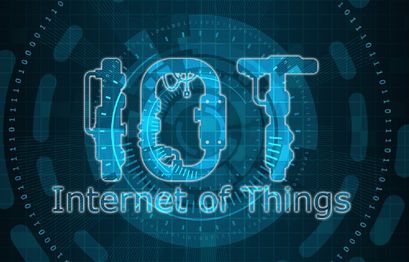The seemingly countless ways of configuring technology to suit different circumstances are touted as one of the incredible things about IoT. However, this also creates IoT problems: Not all IoT solutions and devices are compatible with each other or with other tools and applications. Adding new software and hardware to the mix may require users to make multiple changes to keep the functionality they’re accustomed to while accommodating the new technology.
There’s another reason incompatibility is among the biggest IoT problems. The solution might depend on open-source technology. While that isn’t a problem in itself, different users might end up with different variations of the technology if it doesn’t have a regulating authority to establish a clear universal standard.
In some cases, there are easy fixes to these IoT problems. For example, it’s easy to exchange some components of an IoT stack for other tech. Generally, IoT solutions are getting more and more versatile and making integration simpler.
Solving IoT problems through decentralized connectivity
To this end, telecommunications provider Chirp Network just joined L1 blockchain peaq to provide decentralized connectivity for smart devices. Chirp is solving IoT problems by building a unified, multi-protocol decentralized connectivity network that will enable the exchange of data over any supported protocol and from any distance.
Its network includes its “Blackbird” gateways, already spread across 33 countries, which provide connectivity for other IoT hardware across a variety of channels, including LoRaWAN, LoRa 2.4 gHz, BLE, and more.
Coupled with Chirp’s LTE networks, Blackbirds can connect devices anywhere in the world, solving IoT problems and enabling entire networks and fleets to exchange data on a borderless backbone seamlessly. Chirp is joining peaq to grant DePINs a reliable and versatile way to connect smart devices to global networks over any major Internet of Things (IoT) protocol.
The flagship DePIN in the ecosystem
XMAQUINA, the project behind the world’s first fully autonomous tokenized robot cafe, will be the first DePIN in the peaq ecosystem to tap Chirp Network as its connectivity layer. XMAQUINA’s tokenized robotic barista, recently unveiled at the TOKEN2049 conference in Dubai, uses Chirp to link with peaq, exchanging data with the blockchain via Chirp’s IoT connectivity layer. This enables it to operate autonomously, doing away with many IoT problems.
Chirp will also be providing connectivity for ELOOP, a project enabling tokenized investment in DePINs via the peaq network, as well as Silencio, a DePIN on peaq rewarding people with crypto for collecting local noise pollution data.
A backbone for all linked devices
Chirp’s integration with peaq creates a backbone for devices on peaq, enabling DePIN builders to tap the Chirp Network as their connectivity layer. By doing so, they can avoid IoT problems and launch their dApps faster without having to worry about roaming contracts to ensure global connectivity.
Chirp will create an endpoint layer for devices on peaq — a service that will enable them to communicate with the peaq blockchain — and set up an API to give builders more flexibility. It will also launch a data handling service for DePIN devices using SIM cards, such as smartphones and tablets.
As part of the collaboration to solve IoT problems, Chirp will also build a peaq integration adapter, which will work as a handy tool for builders looking to customize their integration with peaq and leverage peaq as the data storage layer for its own DePIN.
Tim Kravchunovsky, founder of Chirp Network, commented on the innovative solution to IoT problems:
Reaching true decentralization is no trivial matter. Our integration with peaq will bring the DePINs building in its ecosystem one major step closer to it — ultimately resulting in a world whose infrastructure backbone is run by its users, not Big Tech. This integration boosts peaq’s position as the leading layer-1 for DePIN projects.
Till Wendler, co-founder of peaq, added that decentralized connectivity and networking are important functions for any DePIN. peaq’s integration with Chirp solves IoT problems by unlocking a crucial feature for all DePINs in the ecosystem. It enables devices all over the world to communicate via a people-owned network. Mr. Wendler concludes that Chirp’s agnostic approach to wireless protocols will assist DePIN builders in bringing the largest-ever number of IoT devices on-chain.











